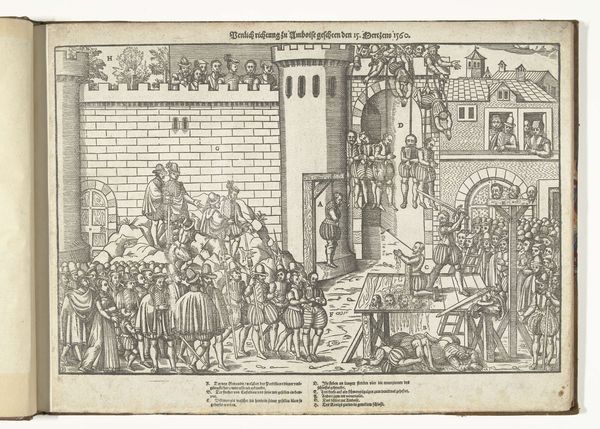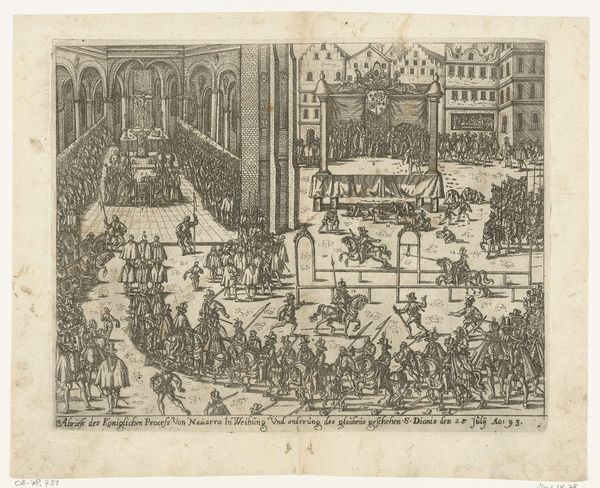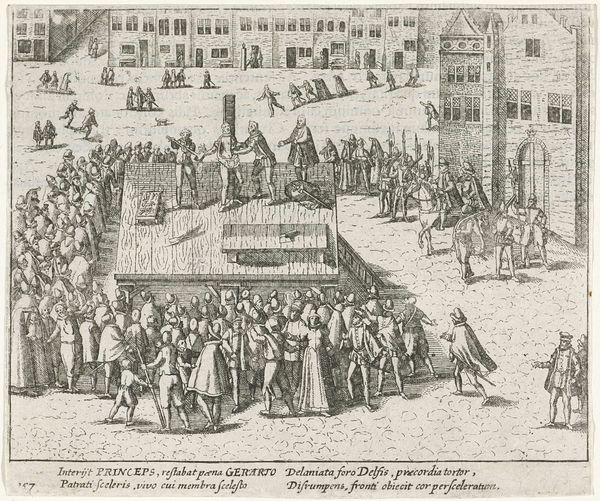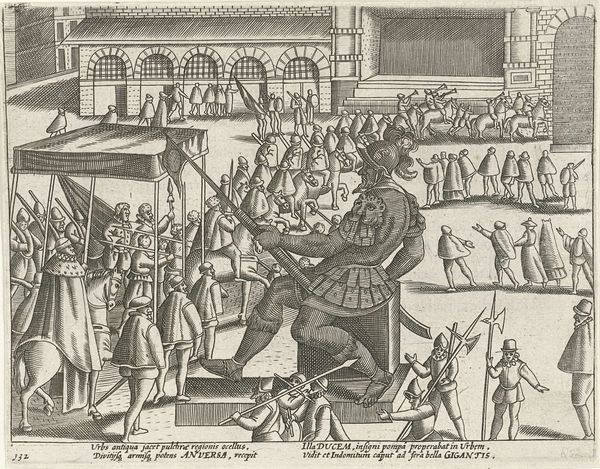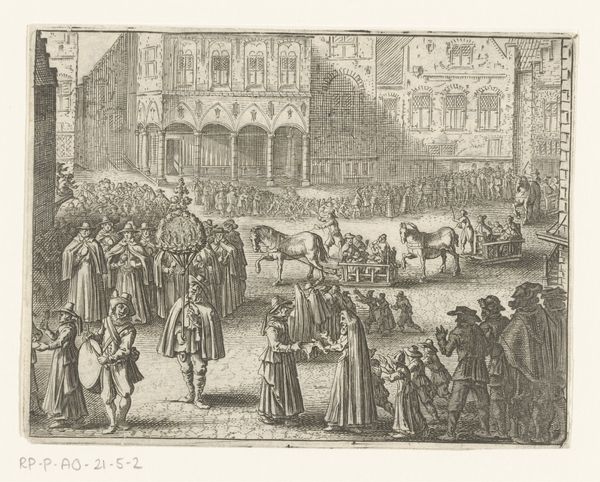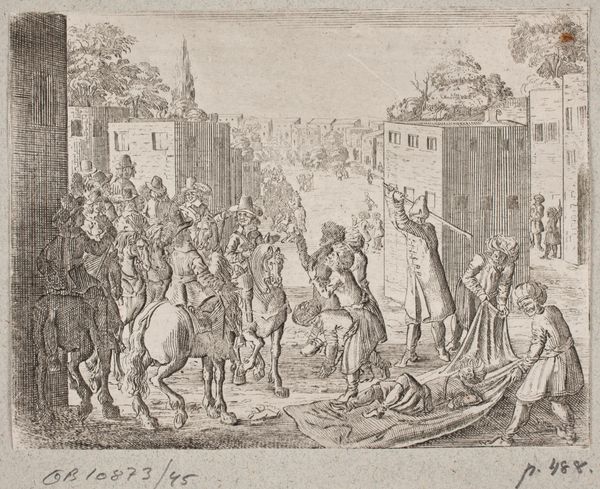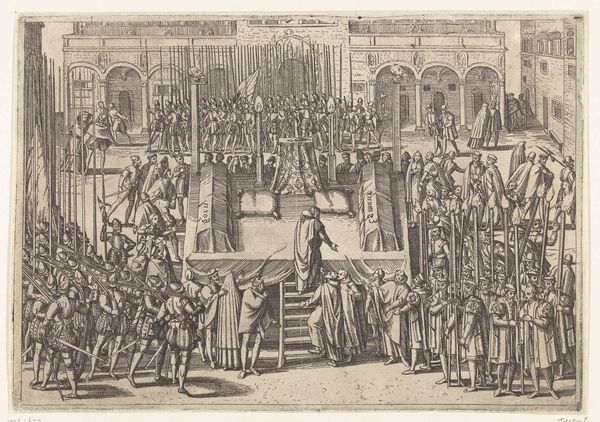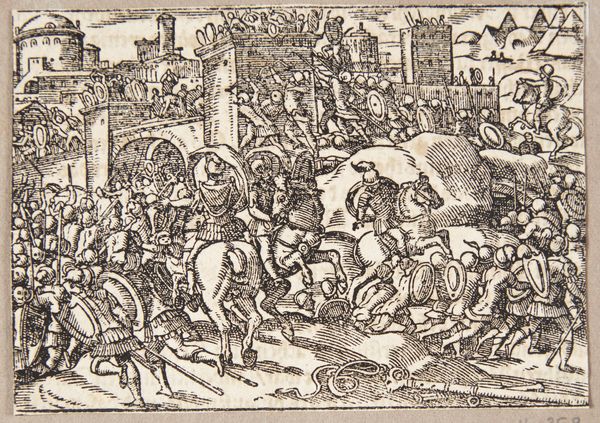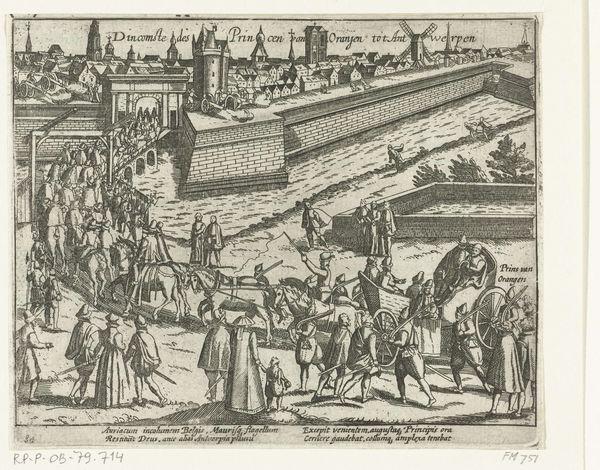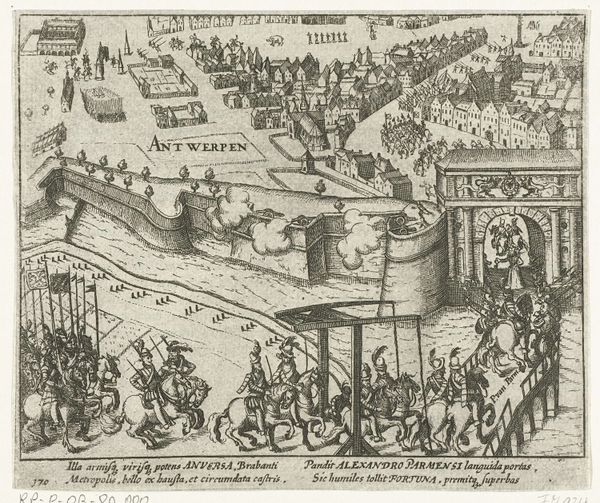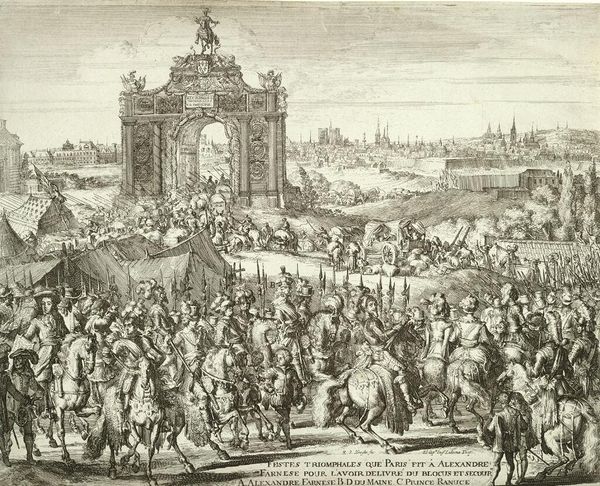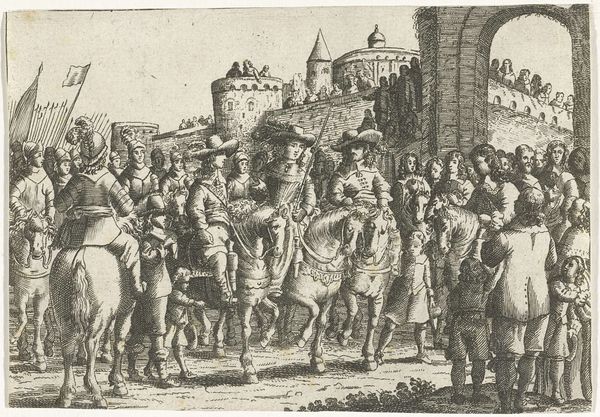
Funeral of General Johan Baptiste von Taxis (from Jules Chifflet, "Les marques d'honneur de la Maison de Tassis," Antwerp, 1645) 1645
0:00
0:00
drawing, print, engraving
#
drawing
#
narrative-art
#
baroque
# print
#
cityscape
#
history-painting
#
engraving
Dimensions: Plate: 13 3/8 × 17 3/16 in. (34 × 43.7 cm)
Copyright: Public Domain
Editor: Here we have Wenceslaus Hollar's "Funeral of General Johan Baptiste von Taxis," a 1645 engraving. The sheer number of figures is striking; it really gives you a sense of the scale of the procession. What catches your eye when you look at this piece? Curator: As a materialist, I'm immediately drawn to the engraving process itself. Think about the labor involved: the meticulous cutting into the metal plate, the inking, the printing. Each line signifies a decision, a precise act of crafting. It transforms an event into a reproducible commodity, extending the reach and impact of the Taxis family's power. How does this dissemination reflect the anxieties or assertions of the time? Editor: That’s interesting; I hadn’t considered it that way. It’s not just a record, it’s a carefully produced and distributed object. Were prints like this common for memorializing figures of authority? Curator: Exactly. And consider the social context. The Taxis family were essentially the postal service barons of Europe. This print isn’t just about mourning; it's about projecting an image of power, of control over communication itself. Notice the detail in the architecture – do you see any signifiers of authority embedded there? Editor: I see the building in the upper left has elaborate carvings. It does seem carefully composed, down to the patterns created by the procession itself. You've given me a lot to consider regarding the making and the marketing, essentially, of the image. Curator: And that’s crucial, isn't it? Examining the print through its materials and the social dynamics of its production gives us a richer understanding than simply viewing it as a historical illustration. Considering how value is ascribed to this image—both financially, and symbolically—shifts our perspective. Editor: I'm starting to appreciate the layered meaning within the print; it is more than the depiction of a funeral! Thanks so much.
Comments
No comments
Be the first to comment and join the conversation on the ultimate creative platform.
